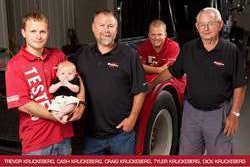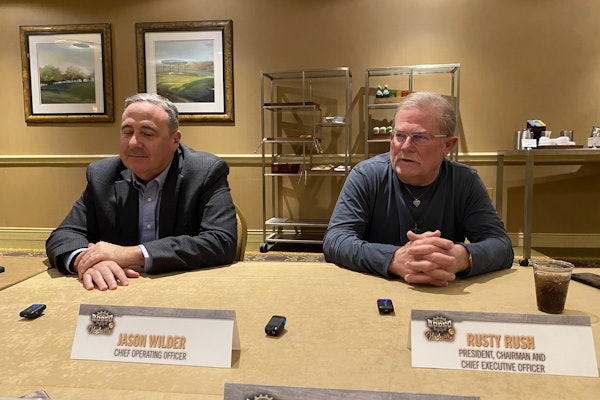I’m a big fan of American Trucking Associations’ Technology & Maintenance Council (TMC).
I attend TMC’s two meetings each year, and in addition to the fantastic content — there’s no other event in trucking that talks maintenance as thoroughly as TMC — one of my favorite parts of each meeting is seeing fleet representatives debate issues with the suppliers (OEMs, service providers) who serve them.
TMC also gives me a chance, even if only for a week, to see how fleets deal with aftermarket problems. It lets me see how they respond, and what they think when their aftermarket supplier fails them. It lets me see how the other half lives.
And I’ll tell you, some of their thoughts would surprise you.
Your fleet customers hold you to a high standard, yes, but they’re also incredibly aware of how difficult your job is. They know as well as anyone how quickly this industry is changing, and how maddening it is to try and keep up.
They also know your service bays are understaffed, your techs are aging, and that the complexity of your job responsibilities are growing by the minute.
That’s why they want to help.
During a joint panel discussion at TMC’s Annual Meeting last month in Nashville, three fleet maintenance man- agers mentioned cooperative strategies they’ve installed in their operations to enhance partnerships with their service providers and make it easier to get their trucks back on the road.
One area where fleets are trying to help is dealing with the previously mentioned tech shortage.
That’s not an aftermarket-specific problem, and while it’s true that both you and your customers are fishing from the same technician talent pool, fleets today want to team up to help restock the pool with as much skilled techs as possible.
TMC has responded by writing Recommended Practices in its Fleet Maintenance Management and Service Provider study groups offering guidance for recruiting, training and nurturing technicians. The fleet reps at TMC’s winter meeting also say they’re pounding the pavement to spread the word of the profitable, stable and increasingly available technician jobs you’re offering in your garages.
“I go speak to fifth- and sixth-graders at grade schools,” says Mike Jeffress, director of maintenance at Maverick Transportation. “During the week when they talk about basic electricity in science class, I’ll bring a truck in and show the kids how electricity works in our trucks.”
Jeffress says he’s vocal in offering his service providers tips on how to give a similar presentation.
Dwayne Haug, vice president at Werner Enterprises, says that level of diligence is what it’s going to take to combat the shortage.
“We have to be more creative in finding technicians,” he says. “We have to get out ahead there and show young people that these are good jobs; you can build yourself a good future and a good career.”
“We want to help the whole system get better,” adds John Sullivan, director of maintenance at Reliable Carriers.
Sullivan says his fleet has focused its service provider assistance on another trouble area: parts availability.
He says Reliable Carriers is now stocking items his trucks need but most service locations typically don’t stock, and is regularly shipping those parts to service bays to get his trucks back on the road.
“We know what parts [our trucks] need, and we’d rather ship it to our service provider than wait for them to find it,” he says.
The fleets acknowledge service providers’ issues with repair information as well.
“How can I blame a technician for a slow repair when he hasn’t been given the information necessary to do the job?” says Jeffress. “OEs have to get that repair information out to their networks quicker, so these techs can do their jobs.”











